The Dragon's Head Blog: Notes on Anatomy and Physiology: Function of the Thoracolumbar Fascia, Part 1
Today we want to take another look at the purposes served by our thoracolumbar fascia during the activities of a normal day.
The first thing to point out is that western medicine has only discovered the functional significance of this fascial sheet over the last 40 years. And yet the ancient art we practice has made routine use of this aspect of our physiology for centuries. A reminder that what is seen as discovery is often actually rediscovery. And an indication of the sophisticated understanding of human physiology that guides us in the practice hall.
Many in our culture still do not appreciate the crucial role played by the thoracolumbar fascia and other connective tissues of the body. It is good to keep this in mind when discussing the benefits of the Taoist Tai Chi® arts with western health practitioners.
We have already looked at the structure of the thoracolumbar fascia and how it links hands to feet, the back to the front, the outside to the inside. It is time now to examine how it adds both structure and power to the spine.
Let’s start with thoracolumbar fascia as structure, as scaffold of the spine.
In our world, things are either supported from above with an object suspended by a cable under tension. Or they are braced from below, like the elements of a stone wall making use of continuous compression. It’s one or the other. Tension (hanging) or compression (bracing). Everywhere, we encounter examples of these two very different means of maintaining structure.
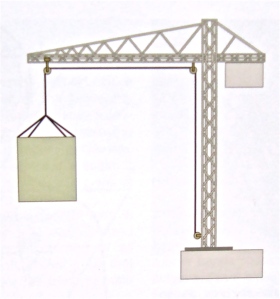
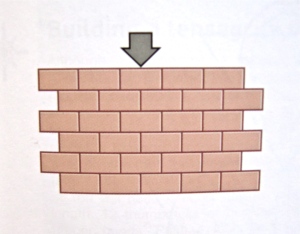
The inclination in our culture is to look at the body as if it was constructed solely by means of compression. We tend to think of the skeleton as another version of the stone wall with the bones stacked one on top of the other, each relying on the ones below.
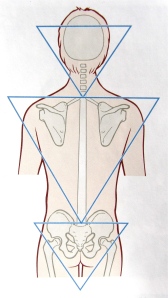
The reality, however, is that elimination of the soft tissues that tie bones together would result in the bones clattering into a pile at our feet.
In creating structure, the human body actually uses both tension and compression in a manner known as tensegrity. This is a term coined by architect Buckminster Fuller in 1929 when he combined the words “tension” and “integrity” to describe structures whose integrity rely on local, discontinuous compression members (for us, our bones) floating in a sea of continuous tension (our muscles and connective tissue). The bones push outward against soft tissues that pull in. Bones resist shortening and soft tissues resist expansion.
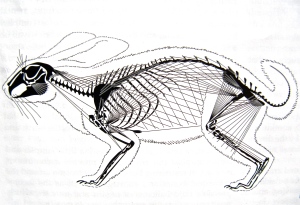
Take a look at Kenneth Snelson’s sculptures at www.kennethsnelson.net to get a better sense of how tensegrity works. I’ll describe shortly how to build an icosahedron that gives you a wonderful feel for how the human body, along with many other living things, makes use of tensegrity.
The pup tent also illustrates tensegrity. Poles at either end, acting as compression elements, have no contact with one another and yet resist collapse. The guy wires and fabric of the tent are continuous and provide the tension that makes of the tent a coherent whole.
With tensegrity in mind, we can begin to appreciate how the thoracolumbar fascia creates structure through tension. As the fascia is lengthened or separated, its fibers resist further expansion. Tension builds within the fascial sheet, pulling on everything with which it connects – the bones of all four limbs, spine, pelvis and skull. As the guy wires of the tent tighten, scaffolding for the spine is created. Structure provided by soft tissues.
Now, let’s discuss thoracolumbar fascia as a source of power, as engine of the spine.
Remember that fascia is elastic. Once stretched, it wants to shorten or return to its resting length. Spread its fibers and we store elastic or recoil energy which can be used to create a bouncing back force. Simply by letting go of the intention to separate, we permit the body to make use of this stored energy to move back towards its original position.
This bouncing back force, then, is another major function of the thoracolumbar fascia and provides power to the spine.
Practicing one of two moves in the set – Step Up And Punch or Push Needle To Sea Bottom – will give you a body sense of this force. With each, the body bends forward towards the ground with one or both knees in a gently bent position. Note that it is the lumbar spine and hip joints that make the movement possible. These articulations move with what is known as lumbopelvic rhythm: a smooth, more or less simultaneous, 40 degree forward bend (flexion) of the lumbar spine and about 70 degree flexion of the hip (pelvis on femur).

With bending forward, the lumbar lordosis or forward curve of the low back is reversed and the thoracolumbar fascia is drawn taut.
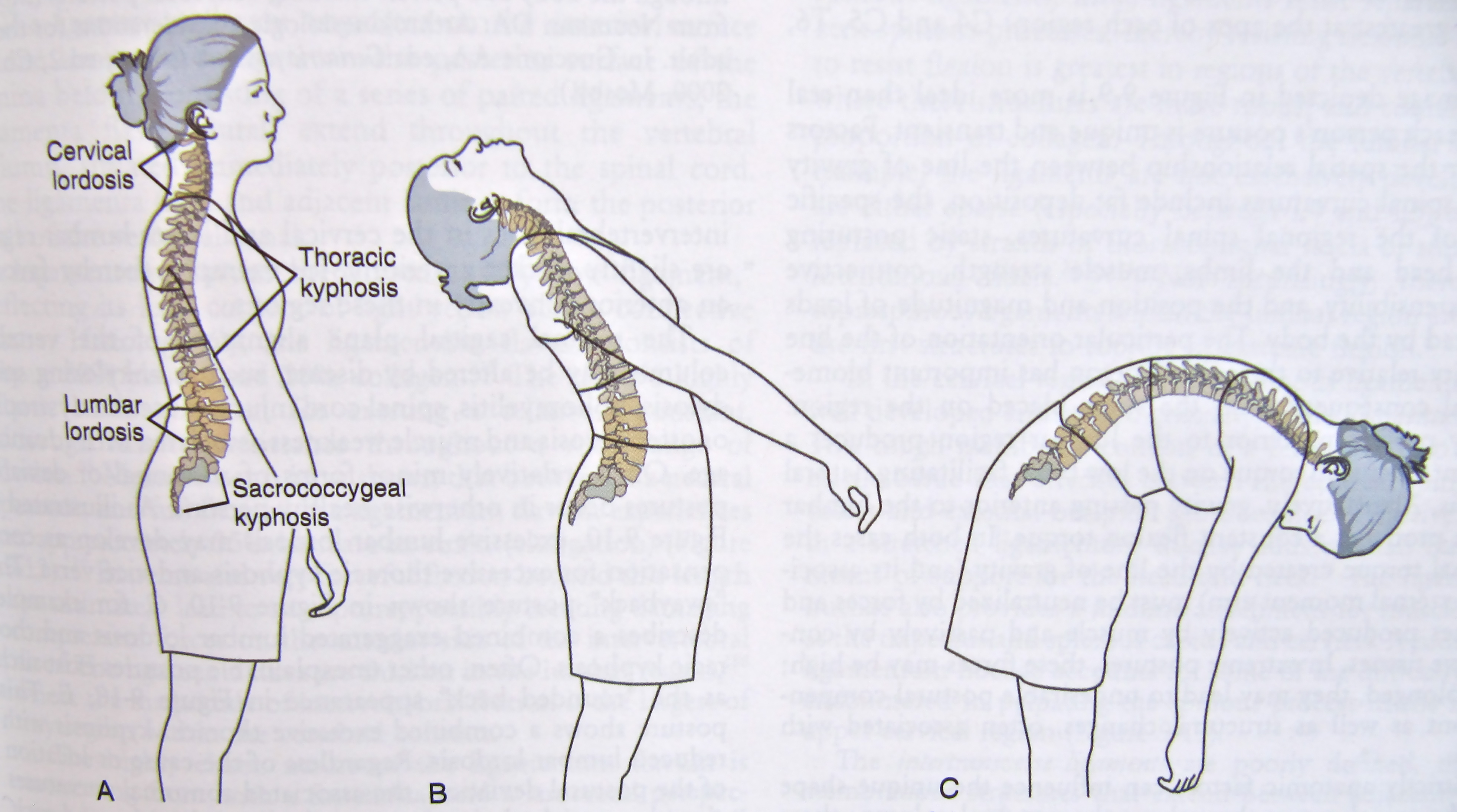
The capacity of the thoracolumbar fascia for elastic recoil can then be used to return the body to an upright posture. And because this sheet of fascia lies almost outside the body, it pulls upward on the trunk with the efficiency of a long lever.

Now, forward bending is not the only way to stretch out the thoracolumbar fascia. Thanks to its widespread connections, we can tug on the fascia through a variety of movements of the arms, legs or pelvis. The descent phase of the don is one such opportunity.
The next image shows the head of the thigh bone (the femur) dropping along the arc of the green arrow as we descend in the don yu. The proximal end of the femur, the part that meets with the pelvis, is free to move while its distal end forms a joint with the knee and is more or less fixed.
The pelvis, attached to the hip, of course falls as well. As they both descend, there is a natural, gentle backward tilting of the pelvis, and the thoracolumbar fascia, melded to the sacrum, and all its extensions are elongated from below.
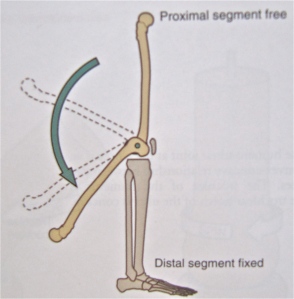
Allowing gravity to lower the pelvis stores elastic energy even though little work is performed. Acceding to gravity on the way down generates energy that can be used to overcome gravity on the way up. Perpetual motion. A neat phenomenon involving a hidden force that develops not only with the don yu but also at the front and back ends of the tor yu. Indeed, every time we settle our weight in the set.
So, thoracolumbar fascia, a source of structure and power whenever we bend forward or settle our weight.
The next post will complete our study of this versatile sheet of tissue.
1. Anatomy Trains, Second Edition, 2009, Thomas W. Myers, Churchill Livingston Elsevier, ISBN: 978-0-443-10283-7
2. Kinesiology of the Musculoskeletal System, 2010, Donald A. Neumann, Mosby Elsevier, ISBN 978-0-323-03989-5
3. «Is the Lumbodorsal Fascia Necessary?», Serge Gracovetsky, First International Fascia Research Congress, 2007

